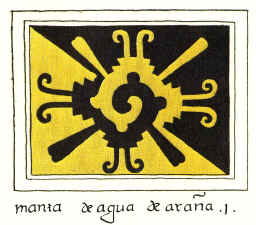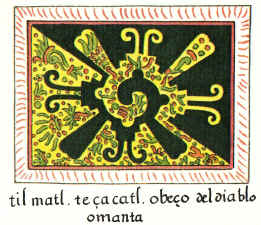Inertia is the force that holds the universe together. Literally. Without it, things would fall apart. It’s also what keeps us locked in destructive habits, and resistant to change.
***
“If it were possible to flick a switch and turn off inertia, the universe would collapse in an instant to a clump of matter,” write Peter and Neal Garneau in In the Grip of the Distant Universe: The Science of Inertia.
“…death is the destination we all share. No one has ever escaped it. And that is as it should be, because death is very likely the single best invention of life. It’s life’s change agent; it clears out the old to make way for the new … Your time is limited, so don’t waste it living someone else’s life.”
— Steve Jobs
Inertia is the force that holds the universe together. Literally. Without it, matter would lack the electric forces necessary to form its current arrangement. Inertia is counteracted by the heat and kinetic energy produced by moving particles. Subtract it and everything cools to -459.67 degrees Fahrenheit (absolute zero temperature). Yet we know so little about inertia and how to leverage it in our daily lives.

The Basics
The German astronomer Johannes Kepler (1571–1630) coined the word “inertia.” The etymology of the term is telling. Kepler obtained it from the Latin for “unskillfulness, ignorance; inactivity or idleness.” True to its origin, inertia keeps us in bed on a lazy Sunday morning (we need to apply activation energy to overcome this state).
Inertia refers to resistance to change — in particular, resistance to changes in motion. Inertia may manifest in physical objects or in the minds of people.
We learn the principle of inertia early on in life. We all know that it takes a force to get something moving, to change its direction, or to stop it.
Our intuitive sense of how inertia works enables us to exercise a degree of control over the world around us. Learning to drive offers further lessons. Without external physical forces, a car would keep moving in a straight line in the same direction. It takes a force (energy) to get a car moving and overcome the inertia that kept it still in a parking space. Changing direction to round a corner or make a U-turn requires further energy. Inertia is why a car does not stop the moment the brakes are applied.
The heavier a vehicle is, the harder it is to overcome inertia and make it stop. A light bicycle stops with ease, while an eight-carriage passenger train needs a good mile to halt. Similarly, the faster we run, the longer it takes to stop. Running in a straight line is much easier than twisting through a crowded sidewalk, changing direction to dodge people.
Any object that can be rotated, such as a wheel, has rotational inertia. This tells us how hard it is to change the object’s speed around the axis. Rotational inertia depends on the mass of the object and its distribution relative to the axis.
Inertia is Newton’s first law of motion, a fundamental principle of physics. Newton summarized it this way: “The vis insita, or innate force of matter, is a power of resisting by which every body, as much as in it lies, endeavors to preserve its present state, whether it be of rest or of moving uniformly forward in a straight line.”
When developing his first law, Newton drew upon the work of Galileo Galilei. In a 1624 letter to Francesco Ingoli, Galileo outlined the principle of inertia:
I tell you that if natural bodies have it from Nature to be moved by any movement, this can only be a circular motion, nor is it possible that Nature has given to any of its integral bodies a propensity to be moved by straight motion. I have many confirmations of this proposition, but for the present one alone suffices, which is this.
I suppose the parts of the universe to be in the best arrangement so that none is out of its place, which is to say that Nature and God have perfectly arranged their structure… Therefore, if the parts of the world are well ordered, the straight motion is superfluous and not natural, and they can only have it when some body is forcibly removed from its natural place, to which it would then return to a straight line.
In 1786, Immanuel Kant elaborated further: “All change of matter has an external cause. (Every body remains in its state of rest or motion in the same direction and with the same velocity, if not compelled by an external cause to forsake this state.) … This mechanical law can only be called the law of inertia (lex inertiæ)….”
Now that we understand the principle, let’s look at some of the ways we can understand it better and apply it to our advantage.
Decision Making and Cognitive Inertia
We all experience cognitive inertia: the tendency to stick to existing ideas, beliefs, and habits even when they no longer serve us well. Few people are truly able to revise their opinions in light of disconfirmatory information. Instead, we succumb to confirmation bias and seek out verification of existing beliefs. It’s much easier to keep thinking what we’ve always been thinking than to reflect on the chance that we might be wrong and update our views. It takes work to overcome cognitive dissonance, just as it takes effort to stop a car or change its direction.
When the environment changes, clinging to old beliefs can be harmful or even fatal. Whether we fail to perceive the changes or fail to respond to them, the result is the same. Even when it’s obvious to others that we must change, it’s not obvious to us. It’s much easier to see something when you’re not directly involved. If I ask you how fast you’re moving right now, you’d likely say zero, but you’re moving 18,000 miles an hour around the sun. Perspective is everything, and the perspective that matters is the one that most closely lines up with reality.
“Sometimes you make up your mind about something without knowing why, and your decision persists by the power of inertia. Every year it gets harder to change.”
— Milan Kundera, The Unbearable Lightness of Being
Cognitive inertia is the reason that changing our habits can be difficult. The default is always the path of least resistance, which is easy to accept and harder to question. Consider your bank, for example. Perhaps you know that there are better options at other banks. Or you have had issues with your bank that took ages to get sorted. Yet very few people actually change their banks, and many of us stick with the account we first opened. After all, moving away from the status quo would require a lot of effort: researching alternatives, transferring balances, closing accounts, etc. And what if something goes wrong? Sounds risky. The switching costs are high, so we stick to the status quo.
Sometimes inertia helps us. After all, questioning everything would be exhausting. But in many cases, it is worthwhile to overcome inertia and set something in motion, or change direction, or halt it.
The important thing about inertia is that it is only the initial push that is difficult. After that, progress tends to be smoother. Ernest Hemingway had a trick for overcoming inertia in his writing. Knowing that getting started was always the hardest part, he chose to finish work each day at a point where he had momentum (rather than when he ran out of ideas). The next day, he could pick up from there. In A Moveable Feast, Hemingway explains:
I always worked until I had something done and I always stopped when I knew what was going to happen next. That way I could be sure of going on the next day.
Later on in the book, he describes another method, which was to write just one sentence:
Do not worry. You have always written before and you will write now. All you have to do is write one true sentence. Write the truest sentence that you know. So, finally I would write one true sentence and go on from there. It was easy then because there was always one true sentence that I knew or had seen or had heard someone say. If I started to write elaborately, or like someone introducing or presenting something, I found that I could cut that scrollwork or ornament out and throw it away and start with the first true simple declarative sentence I had written.
We can learn a lot from Hemingway’s approach to tackling inertia and apply it in areas beyond writing. As with physics, the momentum from getting started can carry us a long way. We just need to muster the required activation energy and get going.
Status Quo Bias: “When in Doubt, Do Nothing”
Cognitive inertia also manifests in the form of status quo bias. When making decisions, we are rarely rational. Faced with competing options and information, we often opt for the default because it’s easy. Doing something other than what we’re already doing requires mental energy that we would rather preserve. In many areas, this helps us avoid decision fatigue.
Many of us eat the same meals most of the time, wear similar outfits, and follow routines. This tendency usually serves us well. But the status quo is not necessarily the optimum solution. Indeed, it may be outright harmful or at least unhelpful if something has changed in the environment or we want to optimize our use of time.
“The great enemy of any attempt to change men’s habits is inertia. Civilization is limited by inertia.”
— Edward L. Bernays, Propaganda
In a paper entitled “If you like it, does it matter if it’s real?” Felipe De Brigard[1] offers a powerful illustration of status quo bias. One of the best-known thought experiments concerns Robert Nozick’s “experience machine.” Nozick asked us to imagine that scientists have created a virtual reality machine capable of simulating any pleasurable experience. We are offered the opportunity to plug ourselves in and live out the rest of our lives in permanent, but fake enjoyment. The experience machine would later inspire the Matrix film series. Presented with the thought experiment, most people balk and claim they would prefer reality. But what if we flip the narrative? De Brigard believed that we are opposed to the experience machine because it contradicts the status quo, the life we are accustomed to.
In an experiment, he asked participants to imagine themselves woken by the doorbell on a Saturday morning. A man in black, introducing himself as Mr. Smith, is at the door. He claims to have vital information. Mr. Smith explains that there has been an error and you are in fact connected to an experience machine. Everything you have lived through so far has been a simulation. He offers a choice: stay plugged in, or return to an unknown real life. Unsurprisingly, far fewer people wished to return to reality in the latter situation than wished to remain in it in the former. The aversive element is not the experience machine itself, but the departure from the status quo it represents.
Conclusion
Inertia is a pervasive, problematic force. It’s the pull that keeps us clinging to old ways and prevents us from trying new things. But as we have seen, it is also a necessary one. Without it, the universe would collapse. Inertia is what enables us to maintain patterns of functioning, maintain relationships, and get through the day without questioning everything. We can overcome inertia much like Hemingway did — by recognizing its influence and taking the necessary steps to create that all-important initial momentum.
***
Prime Members can discuss this on the Learning Community Forum.
End Notes
[1] https://www.tandfonline.com/doi/abs/10.1080/09515080903532290
















